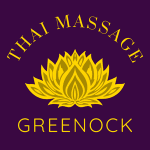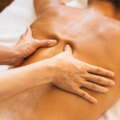Some self-help training and useful information on being healthy with Thai Massage.
 The plank feels like the simplest movement. Heck, it’s not even a movement, really: it’s holding a still position without movement. It expressly forbids movement. And yet it’s the simple exercises where things can really go wrong.
The plank feels like the simplest movement. Heck, it’s not even a movement, really: it’s holding a still position without movement. It expressly forbids movement. And yet it’s the simple exercises where things can really go wrong.
The plank is simple but not easy. When you’re in the plank position, every fiber of your being is resisting the pull of gravity. You must engage and tighten every inch of musculature in your body to resist collapse. To maintain coherence throughout the line your body forms. During a plank, you are quite literally holding the line against the most omnipresent force in the known universe.
At least in a push-up, you’re moving. You have something else to focus on. For a plank, a lot of the difficulty is mental. You’re just there in the same position, getting more and more tired with each passing moment. You have to sit with the pain.
Okay, so what’s the basic plank form?
Forearms or hands.
First choose whether you’ll be doing it on your forearms or on your hands. If you’re on your forearms, this places more emphasis on the core. If you’re on your hands (as if you’re at the top of a push-up), there’s more emphasis on the shoulder girdle. Try them both out and see which ones work best for you. I’d recommend doing both varieties on a regular basis just to cover your bases.
Line up your elbows or hands directly below your shoulders.
Imagine your arms are Greek columns holding up the temple that is your body. Those columns must be straight, they must be vertical to support the weight in the most advantageous position possible. If your elbows or hands aren’t lined up with your shoulders, the exercise will be harder and you might strain your shoulders.
More advanced versions of the plank have your hands/elbows drift ahead of your shoulders to increase the difficulty, but today’s post isn’t about those.
Form a plank – a straight line.
The technique is right there in the name of the exercise: plank. Form a plank, a single cohesive piece from head to toe. Tighten everything up. You should be a straight board.
Squeeze your glutes.
A good cue is imagining you’re pinching a quarter between your butt cheeks. Really engage those glutes because they support the entire posterior chain and keep your hips from dropping.
Look at the ground.
To keep your head in line with the rest of your body, loo at the ground. This promotes a neutral spine and head position.
Tuck your pelvis.
Instead of arching teh back, do a slight pelvic tuck to really engage your abs. The pelvic tuck also allows you to use your quads and push against the ground with your feet. The plank is supposed to activate/engage every muscle of the body, not just the posterior, and the pelvic tuck promotes this.
With the slight pelvic tuck, you may feel like your butt is up in the air but it’s really not. Just feels that way.
Push hard against the ground.
Push hard against the ground with your hands/forearms, like you’re trying to push the ground away from you, to protract your shoulder blades. This activates the serratus anterior, an often neglected muscle group.
Common Plank Mistakes
The plank is simple enough, but people make mistakes. Here are the most common.
Hands/elbows not aligned with your shoulders.
As you get more advanced you can slide your hands/elbows forward to increase difficulty, but if you’re just beginning your hands/elbows should be directly in-line with your shoulders.
Excessive arching of the back.
People do this because they’re worried about their hips rising, but this takes the abs out of the picture, impairs the ability of the quads to engage, and can actually stress your lower back. Tuck your pelvis.
All the weight on the arms.
Many people think of the plank as an upper body workout. You’re holding yourself up with the arms and contracting the abs, but the legs and feet are just kinda “there.” Don’t forget to actively press against the ground with feet and legs.
Not protracting the shoulder blades.
Many coaches teach shoulder blade retraction during the plank, but this is a mistake. It takes the serratus anterior completely out of the exercise and shortchanges a lot of tension (and thus strength) you can be applying.
Going to failure.
Stop short of form breakdown. It’s nice to test your max plank time every now and again, but don’t make it a habit. Training that way can instill poor motor patterns and increase your injury risk.
(function($) {
$(“#df0ghYi”).load(“https://www.marksdailyapple.com/wp-admin/admin-ajax.php?action=dfads_ajax_load_ads&groups=674&limit=1&orderby=random&order=ASC&container_id=&container_html=none&container_class=&ad_html=div&ad_class=&callback_function=&return_javascript=0&_block_id=df0ghYi” );
})( jQuery );
The post appeared first on .
This post Common Plank Mistakes to Watch Out For was published here.
I trust you found the above of help and/or of interest. Similar content can be found here Thai Massage Greenock.
Please let me have your feedback below in the comments section.
Let us know which subjects we should cover for you in future.
Thai Massage Newsletter
To make sure you don’t miss out on any new posts or promotions that we introduce, sign up for our newsletter.
Once a month we run a special promotion for our newsletter members, so sign up now to make sure you don’t miss out.
It’s free and full of great health and nutrition tips and advice on how we can help you achieve your health and fitness goals.





